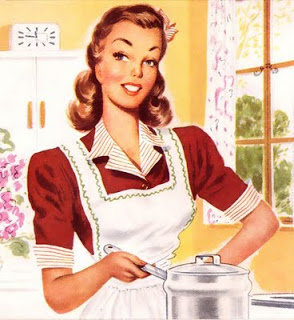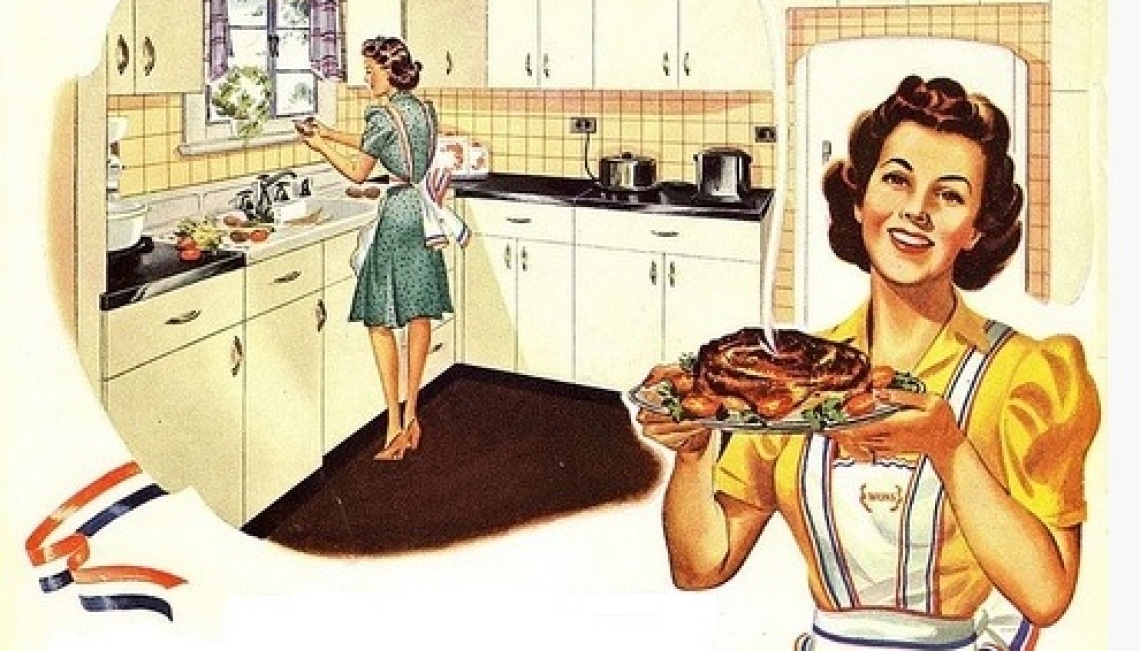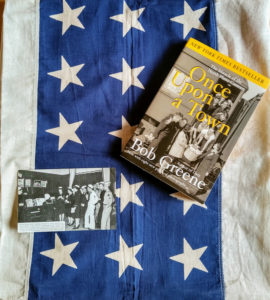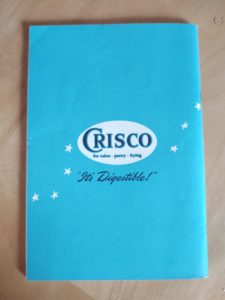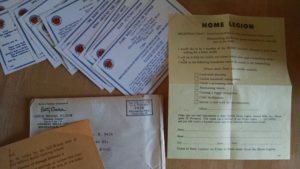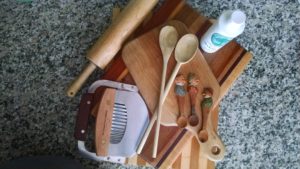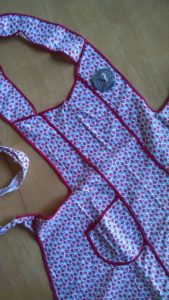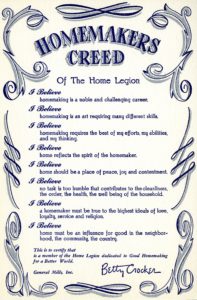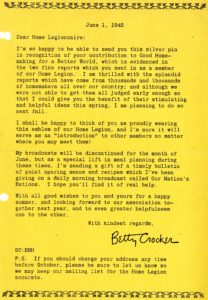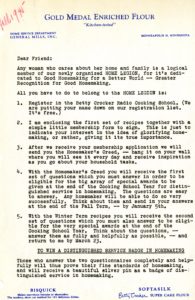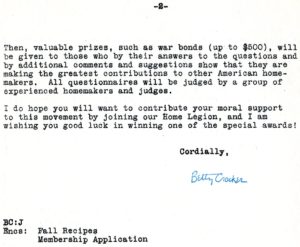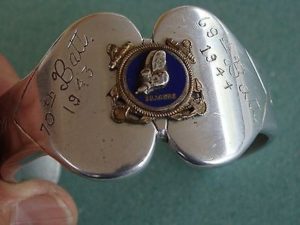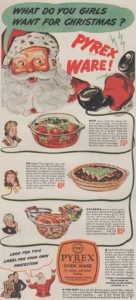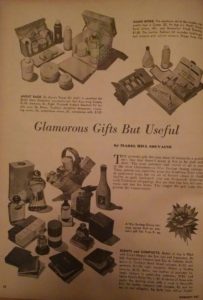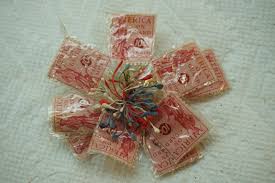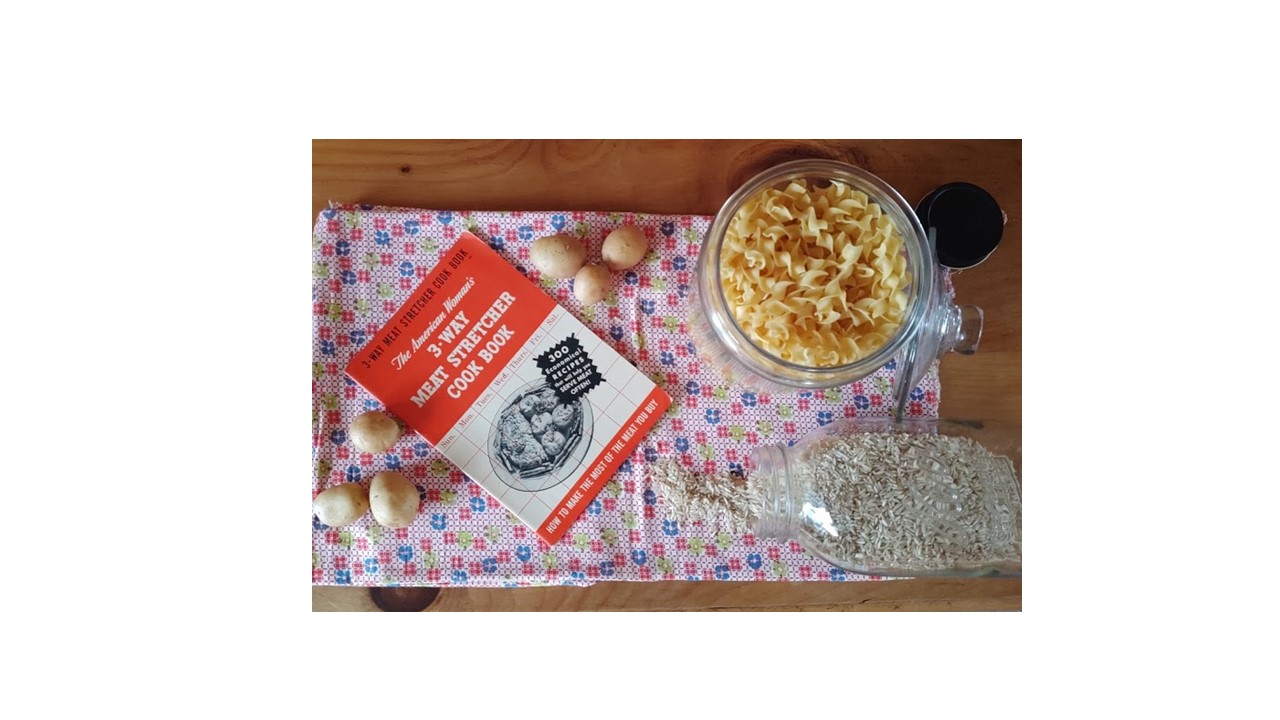
Our grandmothers have some advice for our Covid-19 food prepping and planning. Granted, Covid-19 is not the same as war, but scarcity is. It only took me one trip to the grocery store this weekend to realize that the words contained in WWII era cookbooks (when meat and basic staples were rationed) is part of the legacy of the women who kept things together on the home front.
The words below are from The American Women?s 3-Way Meat Stretcher Cook Book: How to Make the Most of the Meat You Buy published for the Culinary Arts Institute, edited by Ruth Berolzheimer and printed in 1943. Whether you are in a meat-shortage situation or trying to make what you have already purchased last a few weeks without leaving the house, these tips may help you think of basic ways to prepare meat and reuse leftovers.
It may sound difficult at first, but when you read through these tips you?ll see how a pound of meat could stretch over three meals by adding something to it to make a small amount more filling at each sitting. I?ll leave the challenge of Meat Gelatin and ?Variety Meats? up to you!
Ways to Make Good Use of All the Meat You Get
Be open-minded about using different cuts and kinds of meat. Try new ones. Be prepared to change your purchases to what the market offers. If you buy a roast be sure to have definite plans to use the trimmings and the leftovers.
Cooking Meat
Vary seasonings, especially when you use the same kind of meat often. Use a little onion, tomato or green pepper ? a dash of herbs or spices to give a different taste.
Serve attractively. Serve stews, ragouts or rechauffes in a meat pies, as a filling for hot biscuits, or scallop with macaroni, spaghetti or vegetables in a large or individual casserole.
Save all bones, leftover meat, drippings, gravy and meat stock for use in soups or chowders.
With Sandwiches
Sandwiches ? Use a variety of breads; add catsup, chili sauce, chopped pickle or salad dressings. Use plenty of fresh fruits and vegetables in season.
French-Toasted Sandwiches ? Spread ground cooked meat between bread slices, dip in egg and milk mixture and brown in hot fat in a skillet.
Hot Open-Faced Sandwiches ? Place slices of cold or hot meat on toast, bread or biscuits, top with gravy or savory sauce.
With Cereal
Loaves and Patties ? Combine ground meat with cooked rice, bread crumbs, mashed potatoes, cooked corn meal, oatmeal, cracked or whole wheat, or ground vegetables for quick top-of-stove patties or oven-baked loaves.
With Fresh Vegetables
Scalloped Meat: Fill baking dish with alternate layers of chopped cooked meat, or meat stew and cooked noodles, hominy, macaroni, crackers or vegetables; cover with sauce, top with bread crumbs and bake.
Meat Baked with Vegetables and Fruit: Put layers of shredded cabbage or kale and sliced apples in a baking dish, top with cooked sausage cakes, cover and bake.
Baked Stuffed Vegetables: Peppers, eggplant, squash, artichokes, cabbage, potatoes, onions, tomatoes or cucumbers may be stuffed with rice and ground meat or leftover meat and corn.
Chop Suey: Combine browned diced cooked meat with cooked celery, onions, mushrooms and soy sauce; serve with steamed rice or fried noodles.
Salads: Combine chopped cooked meat with vegetables and salad dressing; serve with lettuce, watercress, cabbage or other greens.
With Dumplings
Stews: Add sliced or diced vegetables to cubed meat cooked almost tender; top with dumplings.
With Gelatin
Jellied Salads: Cold diced meat with diced vegetables in gelatin make jellied salads. These are an attractive way to serve left-overs.
On Toast
Meat Broiled on Toast: Spread bread, toasted on one side, with uncooked ground beef or lamb; broil.
In Soups and Chowders
Soups and Chowders: Add vegetables with barley, macaroni, cracked wheat, whole wheat, spaghetti or noodles to soups and chowders made from meat trimmings and bones.
With Stuffings
Stuffings: Stuff boned breast or shoulder roasts, sparerib sections, chops, heart, ground meat roll or rolled strips of steak with bread, cracker, corn meal, fruit or vegetable stuffing.
With Dried Vegetables
Meat and Dried Vegetables: Combine ground meat with dried beats. Limas, split peas, marrowfat peas or lentils simmered almost tender; cook slowly until mixture thickens.
In Meat Sauce
Meat Sauce: Brown ground meat with leftover gravy or soup stock, onions and pepper; add tomatoes and serve over cooked macaroni, spaghettis, noodles, rice or potatoes.
With Biscuits or Pastry
Biscuit Squares: Spread seasoned cooked meat on squares of baking power biscuit dough, seal edges and bake.
Meat Pies:Â Cover stew with pastry, biscuit rounds, mashed potatoes or corn-meal mush.
Turnovers: Fold filling of chopped cooked meat in rounds of pastry dough, seal edges and bake.
With Croquettes
Croquettes: Combine ground cooked meat with cooked rice; mashed potatoes or white sauce; shape; saute or bake.
With White Sauce
Timbales: Bake ground cooked meat, white sauce and eggs in custard cups.
Souffles: Ground cooked meat, bread crumbs, white sauce, egg yolks and beaten egg whites in a baking dish make a delicious souffle.
Creamed Meat: Serve chopped cooked meat with white sauce or gravy on toast, waffles, potatoes, rice or macaroni.
In Hash
Hash: Dice cooked potatoes with chopped meat, onion and gravy; saute in cakes or cover skillet and turn like an omelet.
Peanuts and Peanut Butter
Mix chopped roasted peanuts with carrots or other chopped vegetables for loaves or croquettes.
Use peanuts with meat, tomatoes, sliced onion and other vegetables in scalloped dishes and in salads. Combine peanut butter with chopped crisp vegetables, chopped dried fruit, jelly, jam, honey, salad dressing, chopped pickles or hard-cooked eggs for sandwich fillings.
Blend peanut butter with pureed tomatoes for soup.
Thicken hot milk with peanut butter for sauce for scalloped or creamed rice, macaroni, potatoes and other vegetables. Add peanut butter to omelet.
If Variety Meats Are New to You
Variety meats such as liver, kidneys and brains are excellent sources of many vitamins and liver is important for blood building.
Liver: Scallop with potatoes, crackers rice, macaroni or noodles; make into loaves, patties or dumplings; or mash for sandwich spreads. Be careful not to overcook.
Kidneys: Broil or scramble with eggs; or make into stews.
Heart: Simmer a long time in moist heat and serve with onion gravy; stuff or slice and braise; or use chopped for meat loaf.
Tongue: Simmer and serve sliced, hot or cold with an interesting sauce; scallop with vegetables; scramble with eggs; or mince for salad spreads.
Sweetbreads: Parboil, dip in egg and milk mixture and brown in fat; pour melted fat over parboiled sweetbreads and broil; serve creamed on toast, croustades, biscuits or muffins. Parboiled and combined with vegetables and nuts, sweetbreads make a delicious salad.
Brains: Serve breaded and fried; creamed on toast; in croquettes; or scrambled with eggs. They can double for sweetbreads in salads.
Tripe: Cook tripe until tender, dip in batter and saute; brush with fat and broil; or serve creamed on toast. Use in pepper pot and chowders.
Spleen and Lungs: Simmer and use in stews or with heart in stews and loaves.
Poultry is America?s Sunday Dinner
Chicken, turkey, duck and goose have long been favorites with everybody. Stuff and roast young well-fattened poultry in uncovered roasting pan in moderate oven. Pour clear fat into jars and use for meat cookery.
Stuff and braise older birds or lean young poultry in covered roasting pan.
Fricassee: Brown cut up poultry and either simmer in added liquid in covered utensil or bake in oven until tender. Make plenty of gravy. It is a favorite extender.
Oven Fry: Fry chicken until thoroughly browned; transfer to covered roasting pan and bake in moderate oven.
Salads: Combine diced cold chicken with celery, lettuce or other greens and mayonnaise. Fruits and vegetables may be added.
Stew or steam less-tender poultry, to make tender. Cool in broth; or add dumplings or noodles to stew and cook tightly covered. Cream cooked poultry cut from bones; serve with rice or noodles, or on toast, waffles or biscuits.
Use chopped cooked chicken as the basis for loaves, croquettes, souffles or timbales, chop suey or hot sandwiches.
Serve sauted chicken livers on toast; giblets in gravy with rice, potatoes or on toast; chopped giblets mixed with fat for sandwich fillings.
Fish and Shellfish are Valuable Alternatives
Learn to use all the varieties of fish available.
Bake, broil, poach, broil or saut? fresh fish at moderate heat.
Use boned cooked fish in cakes, scalloped dishes, loaves, croquettes, chowders or salads. Extend with chopped vegetables, rice, mashed potatoes, spaghetti or white sauce.
Soak or parboil salt or smoked fish and serve in same way as fresh fish. Serve oysters and clams in stews, chowders or scalloped; saut? minced clams in fritter batter. Dip oysters in egg and crumbs and saute; scallop with cracker crumbs or rice; or heat and serve in white sauce on toast.
Serve shrimp in salad; French fried; poached in tomato sauce; broiled and dipped in cold sauce; baked in Creole sauce with rice; or scrambled with eggs.
Crabs may be steamed and served hot or cold; scalloped; made into small flat cakes and fried; deviled in shell and baked; or served in salad.
Alternate Main Dishes to Spare Your Ration Points
Use cheese, eggs, poultry, dried legumes, peanuts and soybeans. Like meat, these foods make a good basis on which to build a meal.
They all contain protein, plus one or more of the other food values found in meat, and usually have additional food values.
Hard Cheese is Rationed
Serve cheese with eggs in fondues and souffles.
Melt American cheese in white sauce and pour over cooked macaroni, spaghetti or noodles; use this sauce over vegetables.
Combine grated American cheese with white sauce or egg for rarebit.
Soft Cheese Does Its Share
Serve cottage cheese as main dish, baked with noodles, on greens, as salad or in sandwich fillings.
Cream cheese, Neufchatel, Camembert, Liederkranz, Brie and the Blue Cheeses are delicious. Use them for sandwiches, salads, desserts and for cheese trays with fresh fruit.
Eat Eggs Often
Serve eggs soft-cooked, hard-cooked, deviled, poached, saut?ed, baked or scrambled. Cook eggs at low temperature.
Combine hard-cooked eggs with macaroni, crackers or spaghetti, and cheese sauce, top with bread crumbs and bake.
Combine chopped hard-cooked eggs with salad dressing for sandwiches; or use scrambled eggs, hot or cold, with tomato sauce.
Combine eggs with meat, vegetables or cheese for souffles or timbales.
Poach eggs in milk, tomato sauce, meat or vegetable stocks.
Dried Beans and Peas
Simmer beans slowly in covered pan; or bake parboiled beans long and slowly with molasses, mustard, salt pork and onion. Save bean stop for soup.
Combine mashed cooked beans with milk, beaten eggs, bread crumbs and seasoning for loaves and croquettes.
Combine baked beans with onion, pickle, relish or tomato sauce and mayonnaise for sandwich fillings.
Soybeans
Cook dried soybeans and serve in the same way as other dried beans.
Press cooked dried soybeans through a coarse sieve or grind for pulp to make soup, croquettes, loaves, souffles.
Combine cold soybean pulp with chopped onion and salad dressing, milk or tomato sauce for sandwich fillings.
Cook green soybeans, shelled or in the pod; serve hot as vegetable or cold in salads.
